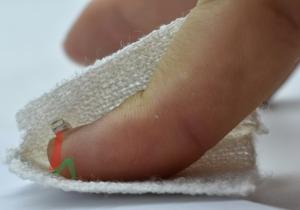
[뉴스웍스=문병도 기자] With the development of wearable devices, electronic fiber technology that combines light and comfortable fibers with smart electronic devices is attracting attention as a next-generation new technology.
Hyun-Jung Lee, Jeong-A Lim, Ph. We have developed a technology that can manufacture fiber-type electronic devices such as
In 2019, Dr. Hyun-Jung Lee’s research team developed a technology that can form an electrode on a desired surface by printing carbon nanotube (CNT) ink on a hydrogel substrate, a polymer containing water, and transferring it.
The CNT electrode printed on the hydrogel is like floating in water, and it is expected that if the fiber is rolled on it, it can be easily transferred to the surface of the fiber without damaging the electrode structure. As a result of a study with Dr. Jeong-ah Lim’s research team, the actual semiconductor layer and CNT A high-performance fibrous device was fabricated without damaging the electrode.
The fibrous transistor wrapped with the developed CNT electrode maintained stable performance of more than 80% even when it was bent to a 1.75mm bending radius.
By utilizing the translucent properties of the CNT electrode, we succeeded in fabricating a fibrous photodiode capable of sensing light by wrapping the electrode seal coated with a semiconductor layer that can generate current by absorbing light with the CNT electrode.
The fabricated fibrous photodiode can detect light in a wide visible light range and has excellent sensitivity that is not inferior to that of planar devices.
When the fiber-type photodiode developed by the research team is inserted into a fabric with an LED element and worn like a glove, the fiber-type photodiode detects the intensity of reflection of the LED light that changes according to the change in the amount of blood flowing from the fingertips, and can measure the user’s pulse. there was.
Dr. Lim Jung-ah said, “The developed glove-type heart rate monitor replaces the pincer-type heart rate monitor, so you can easily approach the person with a comfortable and soft feeling, and it has the advantage of being able to measure your heart rate in real time anywhere, anytime.”
Dr. Hyun-Jung Lee said, “We expect to accelerate the development of fiber-type electronic devices with complex circuits from the improvement of the performance of fiber-type optoelectronic devices.”
Under the support of the Ministry of Science and Technology, Information and Communication, the results of this research, which were carried out as major projects of KIST and as a follow-up research project of the National Research Foundation of Korea, and the original technology development project for nanomaterials, were published in the latest issue of ACS Nano, an international academic journal in the field of nanomaterials.

